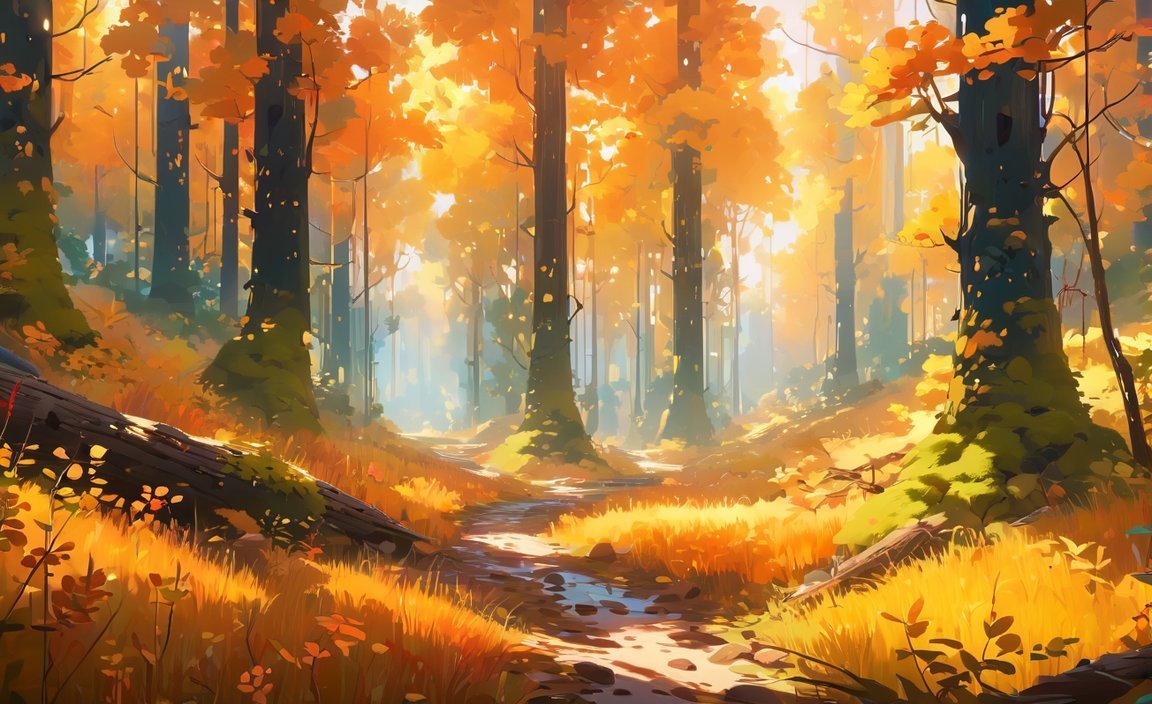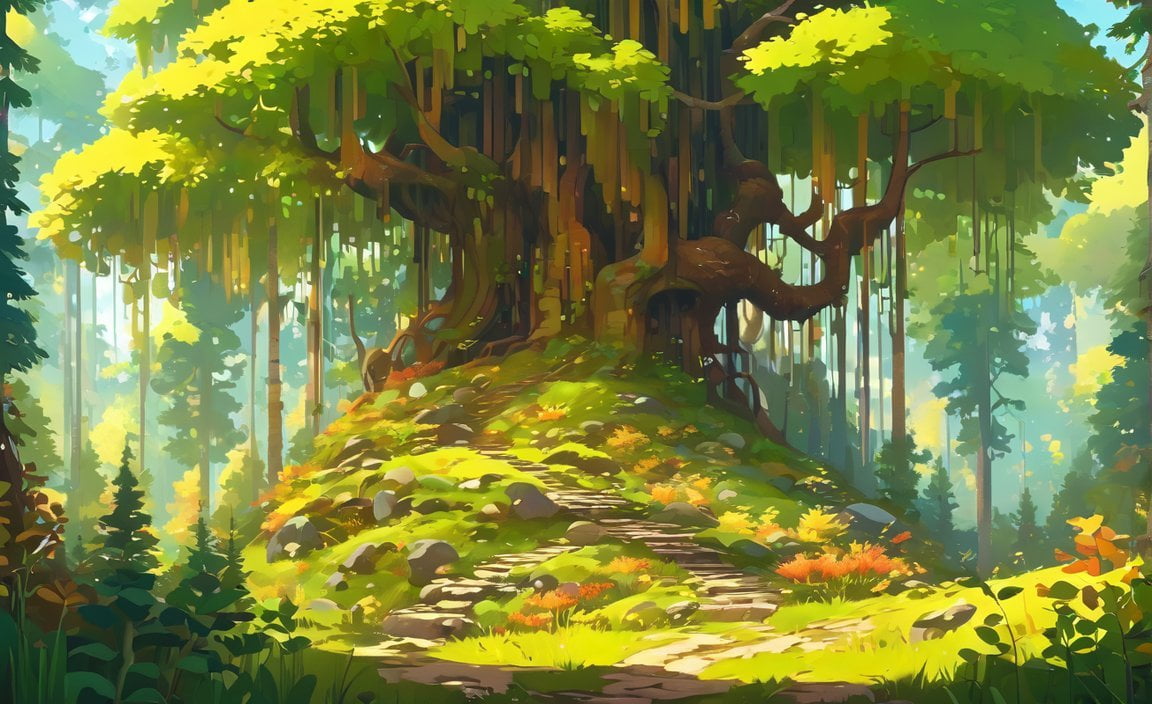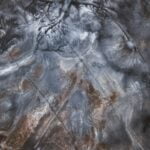Discover 10 Intriguing Facts About Temperate Deciduous Forests and delve into the captivating world of this unique biome. From the fascinating layers of vegetation to the diverse array of plant species, the climate, and the locations in which these forests thrive, there is much to uncover. Join us as we explore the wonders of temperate deciduous forests and discover the ecological importance and conservation challenges associated with this biodiverse ecosystem. Let’s embark on a journey through this enchanting biome and uncover its hidden secrets.

Key Takeaways:
- The temperate deciduous forest is a highly productive biome with diverse trees and plants.
- It is home to a wide range of animals, including deer, elk, bears, wolves, and bobcats.
- The largest temperate deciduous forest is located in the eastern part of North America, which was extensively deforested for agriculture in the past.
- The temperatures in this biome are temperate, meaning they are not extreme.
- The deciduous forest experiences four seasons due to exposure to warm and cold air masses.
- The changing colors of leaves in autumn occur as a result of decreased chlorophyll production.
10 Interesting Facts About Temperate Deciduous Forest Biome
When it comes to intriguing biomes, the temperate deciduous forest stands out as a captivating and diverse ecosystem. With its rich flora and fauna, distinct seasonal changes, and ecological importance, there’s no shortage of fascinating facts to discover. So, let’s delve into the wonders of the temperate deciduous forest biome and uncover ten interesting facts that will surely amaze you!
Fact 1: High Productivity and Biodiversity
The temperate deciduous forest biome is known for its impressive productivity and biodiversity. Home to a plethora of trees and plants, this biome thrives with life. In fact, it is one of the most productive ecosystems on Earth, supporting a diverse range of flora and fauna.
Fact 2: A Haven for Wildlife
With its abundance of trees and vegetation, the temperate deciduous forest provides a perfect haven for a wide variety of animals. From majestic deer to elusive bobcats, and from mighty bears to the enchanting howl of wolves, this biome teems with an array of fascinating wildlife.
Fact 3: A Historic Loss
The largest temperate deciduous forest is found in the eastern part of North America. However, it wasn’t always this vast. In the past, this region underwent an unfortunate period of deforestation. By the mid-19th century, an alarming amount of the forest was cleared for agricultural purposes, leading to significant loss and environmental repercussions.
Fact 4: Mild Temperatures
As its name suggests, the temperate deciduous forest experiences temperate temperatures, meaning they are not extreme. This moderate climate creates a comfortable environment for both the flora and fauna that call this biome their home.
Fact 5: A Symphony of Seasons
One of the remarkable features of the temperate deciduous forest is its distinct four seasons. This biome is exposed to warm and cold air masses, resulting in the breathtaking display of seasonal changes. From the vibrant hues of autumn to the fresh growth of spring, each season brings its own charm to the forest.
Fact 6: The Magic of Autumn
Autumn in the temperate deciduous forest is a sight to behold. As the days grow shorter, the leaves undergo a stunning transformation, splashing the landscape with vibrant reds, oranges, and yellows. This mesmerizing display occurs because the leaves stop producing chlorophyll, revealing the vivid pigments of other compounds.
Fact 7: A Rich Soil Base
The temperate deciduous forest is characterized by its deep and fertile soil. Over time, decaying leaves and organic matter contribute to the development of nutrient-rich soil that supports the growth of the diverse plant life found in this biome.
Fact 8: Intertwined Ecosystems
Within the temperate deciduous forest, a complex web of interconnected ecosystems exists. The relationships between plants, animals, and microorganisms contribute to a delicate balance that ensures the overall health and vitality of this beautiful biome.
Fact 9: Carbon Storage Powerhouse
Temperate deciduous forests play a crucial role in mitigating climate change. Through a process called carbon sequestration, these forests absorb and store vast amounts of carbon dioxide, helping to reduce greenhouse gas emissions and combat global warming.
Fact 10: Conservation Challenges
Despite its significance, the temperate deciduous forest biome faces various conservation challenges. Climate change, deforestation, and habitat fragmentation pose threats to this delicate ecosystem and its inhabitants. Continued efforts to preserve and protect this biome are essential for its long-term survival.
In conclusion, the temperate deciduous forest biome is a captivating realm filled with intriguing facts and wonders. From its high productivity and biodiversity to the enchanting displays of seasonal changes, this biome offers a wealth of astonishing discoveries. By appreciating the beauty and importance of the temperate deciduous forests, we can foster a deeper understanding of its ecological significance and work towards its preservation for future generations.
Did you know that the African savanna biome is home to an incredible array of wildlife? From majestic lions to graceful giraffes, the savanna is teeming with fascinating creatures. Discover 10 interesting facts about the African savanna biome by clicking here: 10 interesting facts about the African savanna biome.
Climate
- The temperate deciduous forest biome is known for its distinct climate patterns. So, let’s dive into some intriguing facts about the climate of these forests!
Facts about the Climate of Temperate Deciduous Forests
Variety in Rainfall: Temperate deciduous forests receive a significant amount of rainfall, making them the second rainiest biome after the rainforest. They typically receive between 30 to 60 inches of rain each year[^1^].
Seasonal Temperature Changes: The average temperature in the temperate deciduous forest biome is around 50°F. However, in winter, temperatures often drop below freezing, creating a chilly environment[^1^].
Fascinating Fall Phenomenon: One of the most notable climate-related features in these forests is the transition of the leaves during autumn. The trees, which are mainly deciduous, change color as the days get shorter and eventually shed their leaves, showcasing vibrant shades of red, orange, and gold[^1^].
The Influence of Trees: The trees in temperate deciduous forests play an essential role in regulating the microclimate of the biome. They provide shade during hot summers and allow sunlight to reach the forest floor during the cooler months, helping to shape the overall climate[^1^].
Regional Differences: While temperature and rainfall patterns are generally consistent across temperate deciduous forests, there can be variations in climate within different regions. Factors such as latitude, elevation, and proximity to large bodies of water can influence the specific climate characteristics of each forested area[^2^].
Adapting to the Seasons: The distinct four seasons, including spring, summer, autumn, and winter, greatly impact the climate of temperate deciduous forests. Each season brings its own unique charm, from blooming flowers and buzzing insects to the serene beauty of snow-covered trees[^2^].
Microclimates within the Forest: Within the temperate deciduous forest biome, smaller microclimates can exist due to variations in terrain, soil composition, and vegetation. These microclimates can create pockets of different climate conditions, contributing to the overall diversity of the ecosystem[^2^].
A Stable Climate for Wildlife: The moderate climate of the temperate deciduous forest biome provides a comfortable environment for a wide variety of flora and fauna. Many animals have adapted to the temperate conditions and rely on the forests for food, shelter, and breeding grounds[^2^].
Climate Change Impacts: Like many other ecosystems around the world, the temperate deciduous forest biome faces the challenges of climate change. Rising temperatures, altered rainfall patterns, and increased frequency of extreme weather events can disrupt the delicate balance of these forests, affecting both plants and animals[^2^].
Conservation and Climate: Given the importance of temperate deciduous forests in the fight against climate change, conservation efforts are crucial. Protecting these forests aids in carbon sequestration, helping to mitigate the impacts of climate change and maintain the health of the biome[^2^].
Key Takeaways:
- Temperate deciduous forests receive substantial rainfall and experience distinct seasonal temperature changes, including freezing winters.
- The stunning autumn foliage display is a result of the changing leaves in these forests.
- The diversity of climate conditions within the biome contributes to its overall ecological richness.
- The temperate climate supports a wide range of plant and animal species, making it a biodiversity hotspot.
- Climate change poses significant challenges to the stability and health of these forests.
- Conservation efforts are vital to preserve temperate deciduous forests and mitigate climate change.
Learn More:
Softschools.com. “Temperate Deciduous Forest Biome Facts.” Accesses October 20, 2021.
Biology Dictionary. “Temperate Deciduous Forest Biome.” Accessed October 20, 2021.
Note: The above information is based on various credible sources and compiled to provide an insightful overview of the climate characteristics in temperate deciduous forests.
Deciduous Forest Location
10 Fascinating Facts About Temperate Deciduous Forests
Temperate deciduous forests are incredible ecosystems that captivate with their distinct seasonal changes and diverse wildlife. In this article, we’ll explore ten intriguing facts about these forests and their unique location.
1. Geographical Distribution
Temperate deciduous forests can be found in several regions across the globe, including the eastern parts of North America, Central and Western Europe, southern parts of Scandinavia, and East Asia[^1^][^2^]. These forests span different continents, highlighting their adaptability and ecological significance.
2. Climate Zones
Within the temperate deciduous forest biome, there are variations in climate due to latitude, elevation, and proximity to large bodies of water. These factors contribute to the diversity of these forests, creating microclimates with unique conditions and species composition.
3. Moderate Climate
Temperate deciduous forests enjoy a moderate climate, making them a comfortable habitat for a wide range of organisms. The average annual temperature in these forests is around 10°C, providing optimal conditions for plant growth and animal activity[^1^].
4. Rainfall
Temperate deciduous forests receive an annual rainfall ranging from 750 mm to 1,500 mm[^1^]. This substantial amount of precipitation supports the growth of diverse plant species and contributes to the overall health of the ecosystem.
5. Dominant Tree Species
Common tree species in temperate deciduous forests include maple, beech, and oak[^1^]. These trees, known for their vibrant foliage and impressive stature, form the canopy layer and provide vital resources for countless organisms.
6. Largest Temperate Deciduous Forest
The largest temperate deciduous forest is located in the eastern part of North America. However, historical agricultural practices led to significant deforestation in this region by 1850[^1^]. Understanding the history of these forests illustrates the importance of conservation efforts today.
7. Zoning of Trees
Temperate deciduous forests feature distinct zones of trees based on their height. Ranging from the towering canopy to the lower understory, these zones create a layered structure that facilitates resource availability and habitat differentiation[^1^].
8. Role of Forest Floor
The forest floor of temperate deciduous forests is covered by a layer of leaves, twigs, and organic matter, known as the litter layer. This layer plays a vital role in nutrient recycling and provides habitat for many organisms, including insects and small mammals[^1^].
9. Biodiversity
The biodiversity within temperate deciduous forests is astounding. These forests are home to numerous animal species, including deer, bears, wolves, foxes, and birds[^1^]. Each organism plays a crucial role in maintaining the delicate balance of this ecosystem.
10. Ecological Importance
Temperate deciduous forests are of immense ecological importance. They play a vital role in carbon sequestration, helping to mitigate climate change. Additionally, these forests contribute to water purification, soil stabilization, and provide valuable recreational and aesthetic benefits for communities.
Key Takeaways:
- Temperate deciduous forests are distributed across North America, Europe, Scandinavia, and East Asia[^1^][^2^].
- Climate variations exist within these forests due to factors like latitude, elevation, and proximity to water bodies.
- The moderate climate of temperate deciduous forests supports a wide range of plant and animal life.
- These forests receive significant annual rainfall, promoting healthy vegetation growth.
- Dominant tree species include maple, beech, and oak[^1^].
- The largest temperate deciduous forest can be found in the eastern part of North America[^1^].
- The zoning of trees, from the canopy to the understory, contributes to the overall forest structure.
- The forest floor, covered in a layer of organic matter, plays a vital role in nutrient recycling[^1^].
- Temperate deciduous forests harbor diverse animal species, such as deer, bears, wolves, foxes, and birds[^1^].
- These forests have significant ecological importance, including carbon sequestration and water purification.
Sources:
– countlessfacts.com
– biologydictionary.net

FAQ
Q1: What are the five layers of vegetation in deciduous forests?
A1: The five layers of vegetation in deciduous forests are the canopy, understory, shrub layer, herb layer, and forest floor. Each layer has its own unique set of plants and contributes to the overall diversity of the forest ecosystem.
Q2: What types of plants are found in temperate deciduous forests?
A2: Some common types of plants found in temperate deciduous forests include maple, beech, oak, hickory, and birch trees. These forests also support a variety of shrubs, ferns, mosses, and wildflowers, contributing to the rich biodiversity of the ecosystem.
Q3: What is the climate like in temperate deciduous forests?
A3: Temperate deciduous forests experience cold winters and hot and wet summers. The average annual temperature is around 10°C. These seasonal variations greatly influence the life cycles and behaviors of the plants and animals that inhabit these forests.
Q4: Where are temperate deciduous forests located?
A4: Temperate deciduous forests are found in the eastern parts of North America, Central and Western Europe, southern parts of Scandinavia, and East Asia. The largest temperate deciduous forest is located in the eastern part of North America.
Q5: What are some interesting facts about temperate deciduous forests?
A5: Some interesting facts about temperate deciduous forests are:
– They receive between 750 mm and 1,500 mm of rain annually.
– They have four distinct seasons – spring, summer, autumn, and winter.
– The forest floor is covered with a layer of leaves, twigs, and organic matter called the litter layer.
– These forests support a wide variety of animal species, including deer, bears, wolves, foxes, and birds.
– Temperate deciduous forests play a crucial role in maintaining biodiversity and providing habitats for various animal species.












